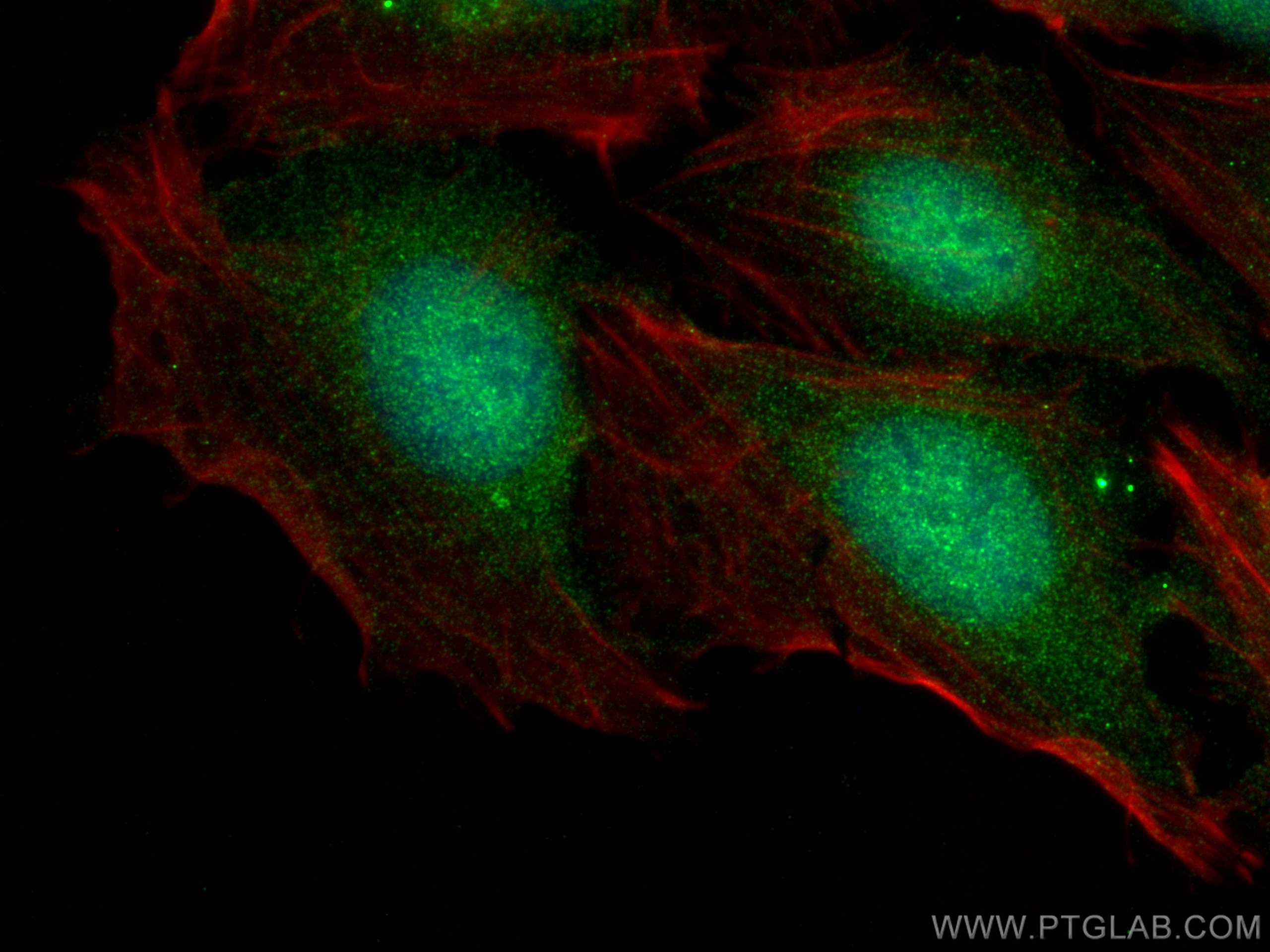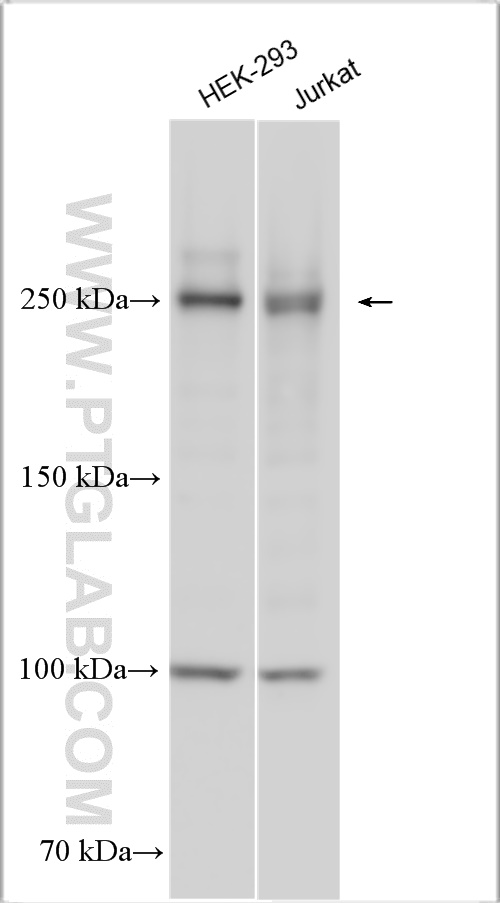验证数据展示
经过测试的应用
| Positive WB detected in | HEK-293 cells, Jurkat cells |
| Positive IF/ICC detected in | U2OS cells |
推荐稀释比
| 应用 | 推荐稀释比 |
|---|---|
| Western Blot (WB) | WB : 1:1000-1:4000 |
| Immunofluorescence (IF)/ICC | IF/ICC : 1:50-1:500 |
| It is recommended that this reagent should be titrated in each testing system to obtain optimal results. | |
| Sample-dependent, Check data in validation data gallery. | |
产品信息
29847-1-AP targets GARNL1 in WB, IF/ICC, ELISA applications and shows reactivity with Human samples.
| 经测试应用 | WB, IF/ICC, ELISA Application Description |
| 经测试反应性 | Human |
| 免疫原 | GARNL1 fusion protein Ag31518 种属同源性预测 |
| 宿主/亚型 | Rabbit / IgG |
| 抗体类别 | Polyclonal |
| 产品类型 | Antibody |
| 全称 | GTPase activating Rap/RanGAP domain-like 1 |
| 别名 | DKFZp566D133, DKFZp667F074, GARNL1, GRIPE, KIAA0884, p240, RALGAPA1, Tuberin like protein 1, TULIP1 |
| 计算分子量 | 230KD |
| 观测分子量 | 250 kDa |
| GenBank蛋白编号 | NM_014990.3 |
| 基因名称 | GARNL1 |
| Gene ID (NCBI) | 253959 |
| RRID | AB_3086178 |
| 偶联类型 | Unconjugated |
| 形式 | Liquid |
| 纯化方式 | Antigen affinity purification |
| UNIPROT ID | Q6GYQ0 |
| 储存缓冲液 | PBS with 0.02% sodium azide and 50% glycerol , pH 7.3 |
| 储存条件 | Store at -20°C. Stable for one year after shipment. Aliquoting is unnecessary for -20oC storage. |
背景介绍
GARNL1/RalGAPα1, a major α subunit of the Ral-GTPase activating protein in skeletal muscle, as a protein whose phosphorylation and binding to the regulatory 14-3-3 proteins is stimulated by insulin and also by muscle contraction (PMID:24768767).The 100 kDa band maybe an isoform or fragment (BAA74907, 943aa).
实验方案
| Product Specific Protocols | |
|---|---|
| WB protocol for GARNL1 antibody 29847-1-AP | Download protocol |
| IF protocol for GARNL1 antibody 29847-1-AP | Download protocol |
| Standard Protocols | |
|---|---|
| Click here to view our Standard Protocols |

